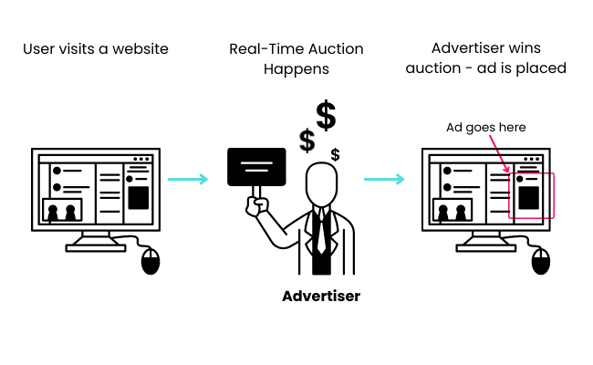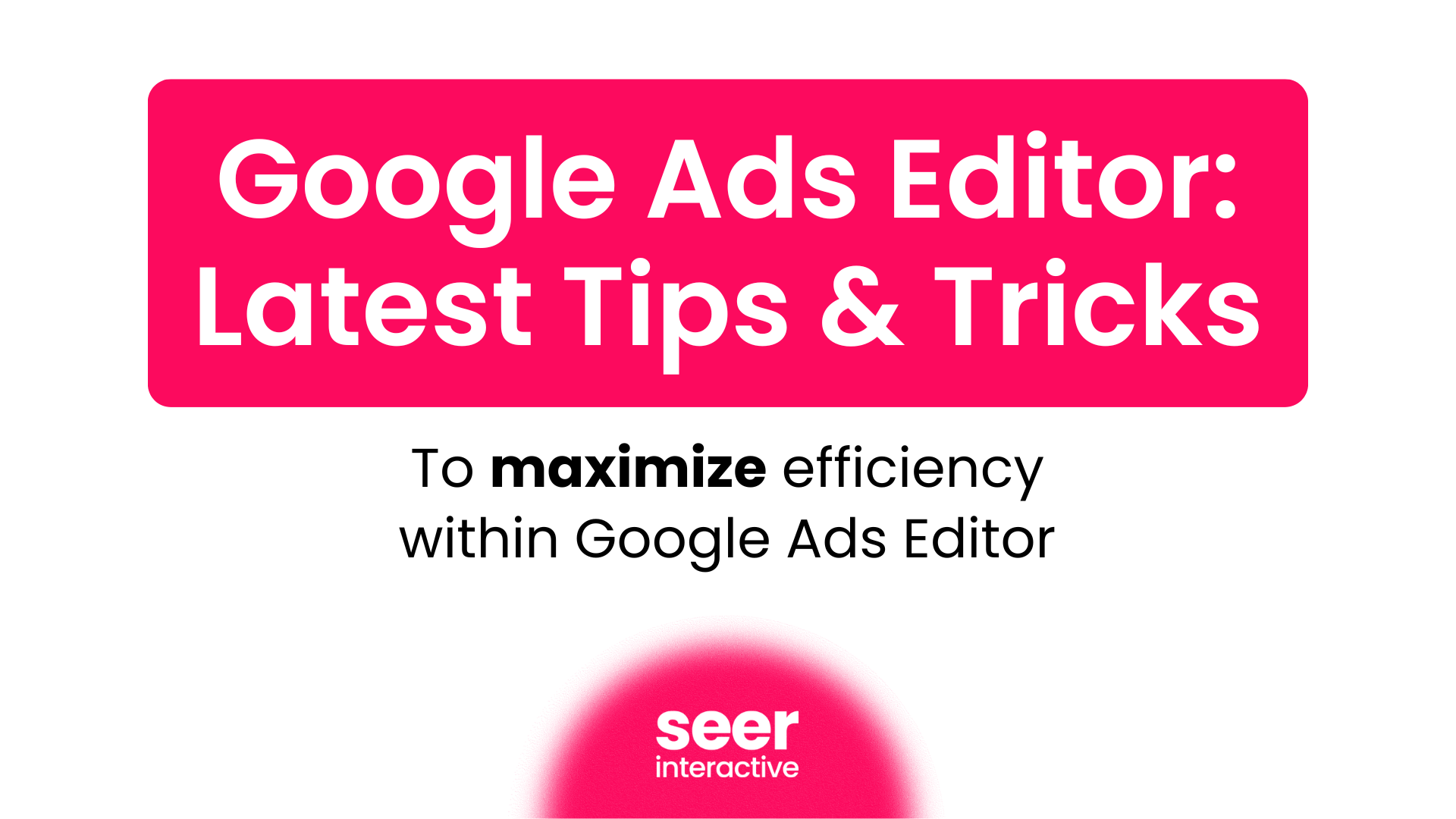This post was originally published in August 2015. It was last updated in March 2021.
Programmatic advertising continues to grow in popularity, as spending on programmatic digital ads in the US grew by 10.4% in 2020. This projection, according to eMarketer, is planning to continue to grow into 2022, with $96.59B. With the increase in programmatic advertising popularity across multiple channels, it’s important to have an understanding behind what programmatic advertising is and how it all works with other marketing channels before kicking off your first campaign.
Programmatic marketing will inherently see a shift in how we target our audiences with the recent announcement of Third-party cookies going away, which you can read our POV on here. However, this does not mean the death of Display advertising, it just means we as marketers will have to get our first-party data organized, get a bit smarter in how we pull together our media plan, and ultimately, be more targeted in our approach to how we reach individuals. In my opinion, I think our results are just going to get better, thus a further increase in investment.
In this post, I’ll explain the basics of programmatic advertising from an industry perspective and the benefits of integrating programmatic advertising into your digital marketing efforts.
What is Programmatic Advertising?
Simply stated, programmatic advertising is the automated process of buying and selling ad inventory through an exchange, connecting advertisers to publishers. This process uses artificial intelligence technologies (more about that later) and real-time bidding for inventory across mobile, display, video, CTV, Radio and social channels.
How Does Programmatic Advertising Work?
Artificial intelligence technologies have algorithms that analyze a visitor’s behavior allowing for real time campaign optimizations towards an audience more likely to convert. Programmatic companies have the ability to gather this audience data to then target more precisely.
Programmatic media buying includes the use of DSPs, SSPs and DMPs. DSPs, (demand side platforms) which facilitate the process of buying ad inventory on the open market, provide the ability to reach your target audience due to the integration of DMPs (data management platforms). DMPs collect and analyze a substantial amount of cookie data to then allow the marketer to make more informed decisions of whom their target audience may be.
On the publisher side of things, publishers manage their unsold ad inventory through an SSP (supply side platform). An SSP reports attention data such as how long a visitor was on a specific site or how many pages were viewed per visit. SSPs will ultimately be in charge of picking the winning bid and will serve the winning banner ad on the publisher’s site.
A lot of acronyms right? Does your head hurt yet? Let’s simplify the process…

Marketers' Hesitations
Programmatic advertising was essentially designed to be scalable, efficient, and precise. So why are some marketers and brands hesitant to give it a try? There may be multiple reasons why brands are unsure about this type of advertising, but I will address the top three industry concerns when it comes to launching a programmatic campaign and explain how technology is currently improving to solve these issues.
Ad Fraud
Ad fraud is a huge concern when executing a programmatic campaign, or a display campaign in general, as more than 1/3 of online traffic is fraudulent. With advancements in programmatic technology, we can identify fraudulent traffic based on the behavior of the user. Over a short amount of time, the technology continues to learn which leads are lower quality, allowing marketers to pivot campaigns towards the types of leads that are more likely to convert, ultimately increasing overall ROI.
Viewability
At Seer, we leverage DV360, which gives you the ability to set your viewability settings directly in the engine. We can adjust your campaign based on if the inventory is above the fold (ATF) or below the fold (BTF), allowing for a more strategic campaign based on your desired goal.
Brand Safety
Within DV360, we’re able to block inventory with certain content labels, similar to Google Ads Paid Search. There are also “sensitive” categories that we can layer on to filter out unwanted inventory. If that’s not enough for you, Google also offers use of 3rd party brand safety technology to layer into your campaign with companies such as Integral Ad Science, DoubleVerify, and Adloox. You can read more about those companies' capabilities here.
Programmatic Advertising Advantages
Although there may be some concerns, I do believe that programmatic advertising benefits outweigh the concerns as programmatic technology is continually working towards identifying and solving these issues in an effort to further fine-tune marketers’ campaigns. The following are five top benefits of programmatic advertising that can help improve any marketing campaign:
- Target Your KPIs More Closely – Programmatic technology is continually working to improve performance towards your campaign's KPIs and increasing overall ROI.
- Cost Effective – With programmatic, advertisers have the ability to adjust CPMs in real time dependent upon how heavily that impression is valued.
- Gain More Customer Insights – Learn more about your audience! Programmatic technology is continually gathering “smart” data based upon the type of individual that engages with your brand. Take these learnings and apply it across all marketing efforts to increase overall campaign performance, creating a more holistic marketing approach.
- Easier Media Buying – Forget the complication of RFIs, RFQs & RFPs and spend more time focusing on the overall strategy for your campaign through programmatic technology.
- Scalability – Programmatic allows you to reach a larger audience across multiple websites and touchpoints in a timely and efficient manner.
Big Brands Go Programmatic
Nestle launched a campaign with DV360 (Google Marketing Platform) leveraging their Audio inventory through Spotify to understand the benefits of running audio alongside their existing campaigns. This test showed an increase of 58% in incremental reach, and also reached 21% more unique consumers by adding in audio placements.
Samsung identified a challenge when launching a new phone, the Galaxy A6 and A6+ where they saw that initial spike of interest, but the challenge was keeping the phone top of mind after the initial launch. They launched a Programmatic campaign through DV360 using the frequency management control within the platform. They capped daily ad frequency to avoid wasted impressions, but reach the users enough times to keep the brand top of mind. As a result, they saw a 4X increase in unique user reach at 25% the average cost per user.
Utilize Programmatic Audience Insights Across Marketing Channels
Instead of planning your media buy on where you think your customers are, start focusing on the overall strategy and goal to reach the audience you want. With the ability to adjust the campaign in real-time based on the insights gathered, you start to better understand who your target audience is, allowing for further refinement across all marketing channels.
Instead of compartmentalizing your marketing strategies, start focusing on incorporating all efforts as one large overarching marketing plan to improve ROI across all customer touchpoints.
Now that you understand the basics of programmatic advertising, check out this post to learn how to begin the programmatic buying process.
And with that, I’ll leave you with one of my favorite quotes by Jef I. Richards, “Creative without strategy is called ‘art.’ Creative with strategy is called ‘advertising.'”


